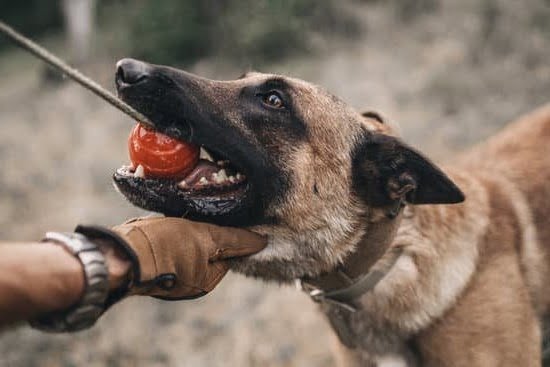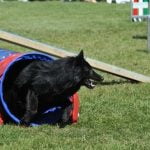Are you struggling with how to train herding dog breeds? Herding dogs are known for their intelligence, agility, and natural instinct to work and control the movement of other animals. In this article, we will explore the essential aspects of training these breeds to become well-behaved and skilled working companions.
Understanding herding dog breeds is crucial for anyone looking to train them effectively. These breeds have been developed over centuries for their ability to herd and work closely with humans. From the energetic Border Collie to the loyal Australian Cattle Dog, each breed has its unique characteristics and traits that should be taken into account when training.
Proper socialization is a fundamental aspect of training any dog, but it holds particular significance for herding dogs. In order to develop a well-rounded and balanced temperament, herding dogs need early and consistent exposure to various people, animals, environments, and situations. This section will delve into the importance of socialization as a building block for successful herding dog training.
The Importance of Proper Socialization
Proper socialization is crucial for herding dogs, as it helps to ensure that they will be well-behaved and adaptable in a variety of situations. Herding dog breeds are known for their intelligence and strong work ethic, but without proper socialization, they can exhibit behavior problems such as fearfulness, aggression, or nervousness around unfamiliar people or animals. This is why it is important for owners to start socializing their herding dogs at a young age.
When considering how to train herding dog breeds with proper socialization, it’s essential to expose them to different environments, people, and animals in a controlled and positive manner. This can include taking them on walks in busy urban areas, visiting dog parks, attending training classes, and introducing them to new experiences such as car rides or loud noises.
By gradually exposing the herding dog to these stimuli and rewarding calm and confident behavior, owners can help their dogs become more comfortable and well-adjusted in various settings.
Additionally, it’s important for owners to provide plenty of opportunities for positive interactions with other people and animals. This can involve arranging playdates with other friendly dogs, inviting friends over to meet the dog at home, or participating in organized activities such as obedience trials or agility courses.
Regular exposure to diverse social situations will help herding dogs develop good manners and confidence while interacting with others. Overall, proper socialization plays a vital role in the overall training of herding dogs by ensuring that they are well-rounded and able to handle whatever tasks they may be given.
Basic Obedience Training for Herding Dogs
When it comes to training herding dogs, basic obedience is a crucial foundation for their development. These intelligent and energetic breeds thrive on structure and discipline, making it essential to establish clear boundaries and expectations from the start. Here are some important basic obedience training tips for herding dogs:
1. Establish leadership: Herding dogs are known for their strong instincts to lead and control, so it’s important to establish yourself as the pack leader early on. Use consistent commands and body language to assert your authority in a calm and assertive manner.
2. Teach basic commands: Start with fundamental commands such as sit, stay, come, heel, and down. Utilize positive reinforcement techniques like treats, praise, and toys to motivate your herding dog to follow your cues.
3. Practice consistency: Consistency is key when training herding dogs. Maintain a regular schedule for training sessions, feeding times, and bathroom breaks to help them understand what is expected of them.
By implementing these basic obedience training techniques, you can lay the groundwork for a well-behaved and obedient herding dog that will be receptive to further advanced training in the future.
One helpful tip for new or experienced trainers is to seek out instructional resources such as books, online courses, or professional trainers who specialize in herding dog breeds. These resources can provide valuable insights into how to train herding dogs effectively while understanding their unique instincts and behaviors.
Utilizing Positive Reinforcement Techniques
Training a herding dog requires the use of positive reinforcement techniques to reinforce good behavior. These techniques involve rewarding your dog for exhibiting the desired behavior, such as following commands or displaying herding instincts. Positive reinforcement can include verbal praise, treats, toys, or affectionate gestures. By using positive reinforcement, you can effectively motivate your herding dog to learn and adhere to training commands.
Some effective positive reinforcement techniques for herding dogs include:
- Clicker training: Using a clicker to signal to your dog that they have performed the correct behavior, followed by a reward.
- Food rewards: Offering small, tasty treats to your herding dog as a reward for following commands or displaying herding instincts.
- Toy rewards: Allowing your dog to play with their favorite toy as a form of positive reinforcement for good behavior during training sessions.
It’s important to consistently and immediately reward your herding dog when they exhibit the desired behavior in order for them to make a positive association with following commands and using their natural herding abilities. This will help reinforce their training and encourage them to continue displaying the correct behavior in the future.
In addition, it’s essential to avoid punishment-based training methods with herding dogs, as they are sensitive and intelligent breeds that respond best to positive reinforcement. Using punishment or harsh correction can undermine their trust and willingness to work with you during training sessions. By utilizing positive reinforcement techniques, you can create a strong bond with your herding dog and effectively train them to be well-behaved companions and skilled workers.
Teaching Herding Instincts and Commands
Understanding Herding Instincts
Herding dogs are known for their natural instinct to control the movement of other animals. This innate behavior stems from their history of working on farms and ranches. Understanding this herding instinct is crucial when training these breeds. It’s important to recognize that herding dogs will often display behaviors such as nipping, barking, and circling, which are all part of their herding instincts.
Introducing Basic Herding Commands
When training a herding dog, it’s essential to start with basic commands to harness their natural instincts effectively. Commands such as “come by,” “away,” “walk up,” and “lie down” are commonly used in herding dog training. Introducing these commands through consistent repetition and positive reinforcement techniques will help the dog learn how to respond appropriately when guiding livestock.
Advancing to Advanced Herding Commands
Once the foundational herding commands are mastered, advanced commands can be introduced to further develop the dog’s herding abilities. Commands like “steady,” “wait,” and “get back” can enhance the dog’s precision and control when working with livestock. Teaching these advanced commands requires patience, consistent practice, and an understanding of each individual dog’s learning pace.
Training a herding dog requires patience, consistency, and an understanding of their specific breed traits. By recognizing their natural instincts, introducing basic herding commands, advancing to more complex instructions, and offering ample mental and physical exercise, you can effectively train your herding dog to become a skilled worker in any herding or farm setting.
Engaging in Mental and Physical Exercise
Herding dogs are known for their high energy levels and need for both mental and physical stimulation. Without proper exercise, they can become destructive or develop behavioral issues. To ensure your herding dog stays healthy and happy, it’s essential to engage them in regular mental and physical exercise.
One way to provide mental exercise for your herding dog is through interactive toys and puzzles. These can help stimulate their problem-solving skills and prevent boredom. Additionally, enrolling your dog in activities such as agility courses or obedience training can provide both mental and physical exercise.
When it comes to physical exercise, herding dogs require plenty of activity to keep them satisfied. Long walks, runs, or hikes are great ways to ensure they get the physical exercise they need. Playing games like fetch or frisbee can also be an excellent way to keep them active.
It’s important to remember that each herding breed may have specific exercise requirements, so it’s essential to tailor their routine based on their individual needs. By providing a combination of mental and physical exercise, you can help keep your herding dog happy and well-behaved.
| Mental Exercise | Physical Exercise |
|---|---|
| Interactive toys and puzzles | Long walks, runs, or hikes |
| Agility courses or obedience training | Playing fetch or frisbee |
Handling Challenges in Training Herding Dogs
Training a herding dog can be incredibly rewarding, but it also comes with its fair share of challenges. One common challenge when training herding dogs is their high energy level and intense focus.
These traits are what make them great herding dogs, but they can also make it difficult to keep their attention during training sessions. To overcome this challenge, it’s important to engage the dog in plenty of physical and mental exercise to help release some of that energy before training sessions.
Another challenge in training herding dogs is their strong instinct to herd, which may lead to inappropriate behavior such as nipping or chasing other animals or even people. It’s crucial to address these behaviors early on through proper training and socialization. Using positive reinforcement techniques, such as rewards for good behavior, can help redirect their natural instincts in a more appropriate way.
Furthermore, herding dogs are known for their independent nature, which can sometimes translate into stubbornness during training sessions. This independence is what makes them reliable herders but can also make them resistant to commands at times. Patience and consistency are key when dealing with this challenge. By establishing clear boundaries and consistently reinforcing obedience commands, you can effectively overcome this obstacle in your training process.
| Challenges | Solutions |
|---|---|
| High energy level and intense focus | Engage dog in plenty of physical and mental exercise before training sessions |
| Strong instinct to herd | Address inappropriate behaviors early on through proper training and socialization using positive reinforcement techniques |
| Independent nature leading to stubbornness | Patience and consistency in establishing clear boundaries and reinforcing obedience commands |
Advanced Training for Herding Dogs
After mastering the basic obedience training and socialization, advanced training for herding dogs is essential to help them reach their full potential. Advanced training focuses on honing the natural instincts and abilities of herding dogs, improving their agility, and refining their responsiveness to commands.
One important aspect of advanced training for herding dogs is teaching them advanced herding commands such as “come by,” “away to me,” and “walk up.” These commands are essential for working with livestock and can also be a fun way to engage your herding dog in activities such as agility courses or competitive herding trials. Advanced training also involves teaching your dog how to work at a distance from you while still maintaining control and focus.
In addition to refining their herding instincts, advanced training for herding dogs should also include advanced obedience exercises such as off-leash obedience, reliable recall, and more complex maneuvers like weaving through obstacles. It is important to continue utilizing positive reinforcement techniques during advanced training to ensure that your herding dog remains motivated and engaged.
To excel in advanced training, it’s crucial for owners to understand the specific needs of their herding breed. Each breed has its own unique characteristics and traits that should be taken into consideration when developing an advanced training program. Whether you have a Border Collie, Australian Shepherd, or any other herding breed, understanding their individual needs will help you tailor the advanced training program to suit them best.
Building a Strong Bond With Your Herding Dog Through Training
Understanding Your Herding Dog’s Needs
Before diving into training, it’s crucial to understand the specific needs of herding dog breeds. These dogs are known for their high levels of energy, intelligence, and strong work ethic. They require mental stimulation, physical exercise, and a sense of purpose to be fulfilled. By understanding these needs, you can tailor your training methods to meet the unique requirements of your herding dog.
Developing Trust and Communication
A strong bond with your herding dog is built on trust and effective communication. During training sessions, focus on developing a deep level of trust between you and your dog. This can be achieved through consistent training routines, positive reinforcement techniques, and clear communication. By establishing trust and effective communication with your herding dog, you’ll create a solid foundation for all future training endeavors.
Creating Meaningful Activities Together
In addition to obedience training and herding instincts development, it’s important to engage in meaningful activities with your herding dog that strengthen your bond. This can include agility courses, outdoor adventures such as hiking or biking, or even participating in canine sports like agility or flyball. These shared experiences not only provide physical exercise but also create lasting memories that deepen the connection between you and your herding dog.
By prioritizing the development of a strong bond through training, you’ll set the stage for a fulfilling partnership with your herding dog based on trust, effective communication, and shared activities that promote an enriching lifestyle for both of you.
Resources for Further Training and Education on Herding Dog Training
In conclusion, training a herding dog requires a deep understanding of the specific characteristics and instincts of these breeds. Proper socialization from an early age is crucial to ensure that they develop into well-rounded and well-behaved companions. Basic obedience training using positive reinforcement techniques is essential for establishing a strong foundation, while also teaching herding instincts and commands to harness their natural abilities.
Engaging in regular mental and physical exercise is important to keep herding dogs stimulated and satisfied, as they thrive on having a job to do. It’s also important for owners to be prepared for challenges that may arise during training, such as stubbornness or high energy levels. Advanced training can further enhance their skills and intelligence, while building a strong bond between owner and dog.
For those seeking additional guidance and education on how to train herding dogs, there are numerous resources available including books, online courses, and professional trainers who specialize in working with herding breeds. By committing time and effort to training, owners can foster a fulfilling partnership with their herding dog based on mutual trust and respect.
Ultimately, the rewards of successfully training a herding dog are immeasurable as they excel in various activities such as agility, obedience trials, and even actual herding work.
Frequently Asked Questions
Are Herding Dogs Easy to Train?
Herding dogs are generally considered to be highly trainable due to their intelligence, focus, and natural instincts. They have been bred for generations to work closely with humans and learn commands quickly.
How Do You Discipline a Herding Dog?
Discipline for herding dogs should be consistent, firm, but gentle. Positive reinforcement is often the most effective method, using rewards for good behavior rather than punishment for bad behavior. These dogs thrive on clear communication and structure.
What Are Herding Dog Commands?
Herding dog commands typically include directional cues such as “come by” for clockwise movement and “away” for counterclockwise movement. They also respond well to basic obedience commands like sit, stay, and lie down. Clear, concise commands are crucial for effective herding work while maintaining a strong bond with their handler.

Welcome to the blog! I am a professional dog trainer and have been working with dogs for many years. In this blog, I will be discussing various topics related to dog training, including tips, tricks, and advice. I hope you find this information helpful and informative. Thanks for reading!





